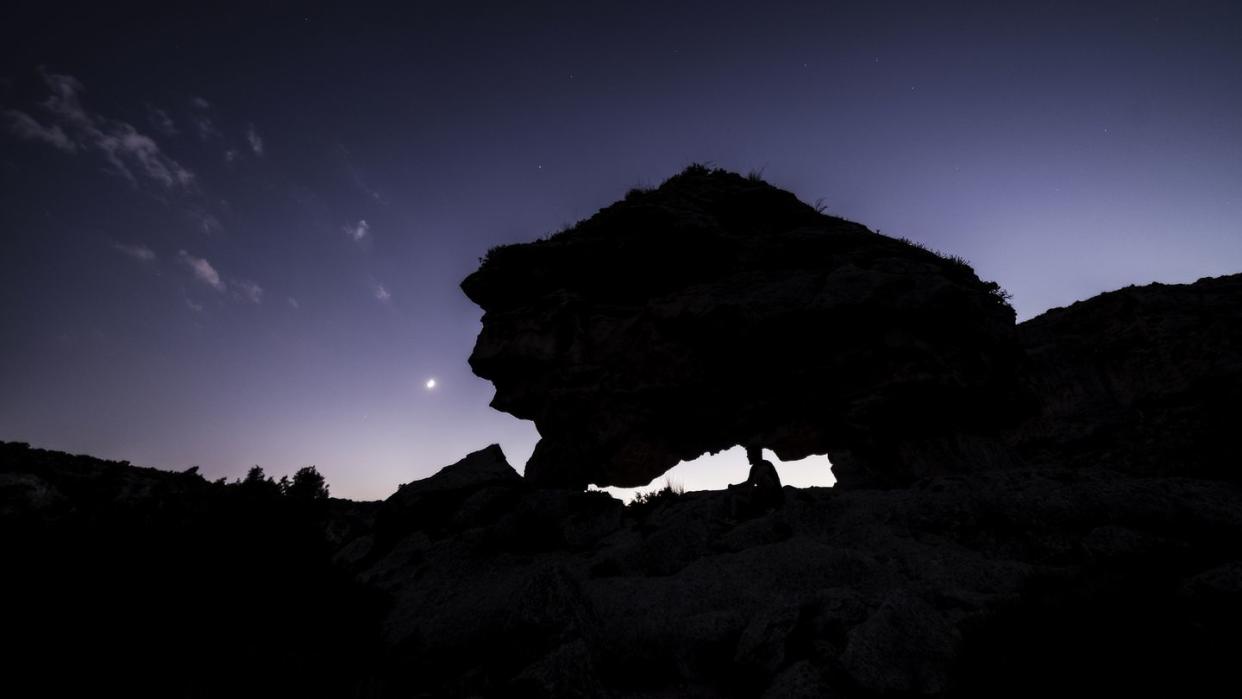Archaeologists Found Ancient Monuments That May Be Pathways for the Dead

Using LiDAR technology, archaeologists discovered a cluster of five rare Neolithic-era earthwork monuments in Ireland.
The ancient find highlights ritualistic practices, likely associated with solar events and ceremonial pathways for the dead.
Now considered some of the largest archaeological monuments in the country, researchers hope the discovery will help transform our understanding of Ireland’s prehistoric culture.
A grouping of five major earthwork monuments have rested together in the Irish town of Baltinglass since the Neolithic period. But we’ve just recently seen them, thanks to LiDAR technology. Considered some of the largest archaeological monuments ever found in Ireland, these rare “cursus” constructions played a pivotal role in ancient life, offering ritual and ceremonial significance for the early farming communities and potentially even forming “routes for the dead” headed to an afterlife.
The discovery was chronicled by University of Aberdeen’s James O’Driscoll, who has spent more than a decade studying the Baltinglass landscape—an area known for Bronze Age and medieval forts, but not the Neolithic period’s cursus. Thanks to the light detection and ranging (LiDAR) laser mapping of the topography, O’Driscoll was able to discover the largest cursus cluster in either Ireland or Britain. The findings were published in the journal Antiquity.
A cursus—described by O’Driscoll in the study as a causewayed enclosure defined by segmented banks, ditches, and palisades—“became a means of drawing together disparate communities to perform rituals and to create a unified group identity.”
These enclosures have been found clustered together in southern England, France, and Scandinavia, but the Baltinglass find highlighted a group of five cursus monuments. This offers a distinct look into Neolithic Ireland, “which is why it’s such an important discovery and was something we didn’t think would appear, because groups of cursus monuments just don’t exist in Ireland,” O’Driscoll told Live Science.
The largest structure is 1,312 feet long, while other, similar structures are generally about 500 to 650 feet in length. “The discovery of the cursus monuments is particularly significant,” O’Driscoll told Newsweek, “as these are incredibly rare in Ireland.”
Researchers believe the new discovery—when placed in the context of the landscape—could be in alignment with important solar events like the Sun rising at the summer solstice, which would be key for the relatively early farming community. But that’s not all.
“The function of these types of monuments has always been a thorny topic,” O’Driscoll told Newsweek, “as we simply don’t have enough information. But given that some of the Baltinglass sites can also be linked with burial monuments, this suggested to me that they may have been ceremonial monuments used in burial practices, where the cursus marked the physical route in which the dead moved from the living into the afterlife.”
Finding such prominent cursus grouped together has lead O’Driscoll to believe that they indicate Baltinglass was a key farming community during the Neolithic period (roughly 4000 to 2000 BC). And considering data showing activity in the Early Neolithic and Middle-late Bronze Age, O’Driscoll said this new study could challenge the idea that the area was abandoned during the two millennia between eras.
O’Driscoll also believes wooden shovels were likely the key implement in the construction. “It shows just how much resources, time, and effort went into building them, since this is a sizable settlement,” he told Live Science.
Future research, including analyzing the area’s soil, will attempt to better understand the farming practices from the Early Neolithic period.
“The implications for the study are significant, as it provides an explanation for the function of this monument type in Ireland,” O’Driscoll said, “and allows us to understand the ritual and ceremonial practices of our ancestors who lived over 5,000 years ago.”
You Might Also Like

